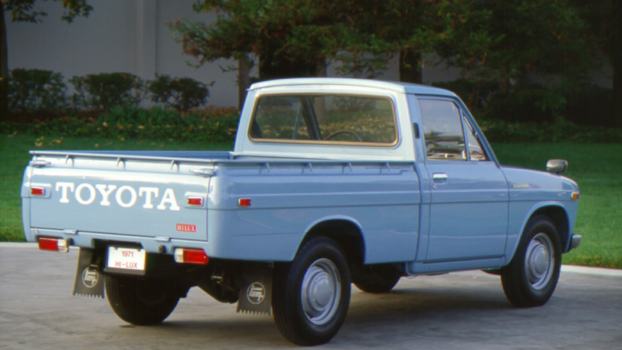
Mercedes vs. the Grey Market: How Corporate Greed Changed U.S. Foreign Car Imports Forever
Here’s the deal with car import laws in the United States: It is nearly impossible to legally import any car or truck under 25 years old. But you can import and register almost any antique car that is older than that. And that antique doesn’t need any type of modern emissions or safety gear. The U.S. has had these laws my entire life, so I always considered them normal. But the truth is that they are relatively unique in the world. And they came about after Mercedes-Benz U.S.A. basically threw a multi-million-dollar tantrum over privately imported cars back in the 1980s.
What cars can you import to the US?
The majority of cars that you can legally import to the U.S. are antiques over 25 years old. You can ship them here, then register them as antiques and drive them on public roads–regardless of how much they pollute or how safe they are–as long as they were originally built for road use.
So what’s the exception to this? Something that was originally intended more as a side-by-side than a passenger car. The problem is in defining that. One contentious group of cars is the Kei-class mini trucks and micro buses that Japanese automakers sell throughout much of the world. You can import them to drive on your own property. But some states that once allowed you to register them as road-going vehicles are de-registering them.
The U.S. government also technically allows any entity to apply for road safety and emissions compliance with any vehicle. What the heck does that mean? An import company called Motorex went through a process similar to what automakers go through with every new model to have the 1990-1999 Nissan Skyline R33 GT25s deemed eligible for import. This required destroying multiple cars in crash tests, and obviously isn’t even an option for rarer cars–or less safe ones.
There are a handful of other loopholes out there. For example, if you move from Canada to the U.S. and can get your vehicle manufacturer to sign off on their Canadian and U.S. models being identical, you may be able to bring a recent car with you.
There are enough loopholes that there are still companies that specialize in trying to import and register a car for you. But in 1989, the number of legally imported cars dropped from thousands to about 300. All because Mercedes wouldn’t back down until new rules and regulations regarding U.S. imports were in place.
Why does the U.S. have a 25-year import rule?
By 1988, it was obvious that the U.S. needed stricter guidelines for importing cars. But the 1989 “25-year import rule” is honestly one of the strictest in the world. And it is probably the result of aggressive lobbying by Mercedes-Benz of North America.

The year was 1988: Vice President George H.W. Bush (senior) was running for President, Die Hard dominated the box office, and Rick Astley’s “Never Gonna Give You Up” was at the top of the hit list. And you could import any car you wanted.
The idea seems absurd by modern standards. But if you went down to the Mercedes-Benz dealership and thought the 300SEL was too slow or overpriced, you could contact a car importing company and order a brand-new 500SEL. And you might save $11,000!
This importer had to bring the turn signals and other lights up to U.S. standards and install a catalytic converter. You were then responsible for keeping the receipts or other paperwork from these modifications to prove your car was up to snuff.
Obviously, this “grey market” was very bad for Mercedes-Benz AG of North America. Throughout the 80s, it launched a campaign against imports. It even bought used imported cars and demonstrated how shoddy some of the modifications were. Other automakers sided with Mercedes, but many dealerships were also importers and supported that business model. A coalition of importers fought the proposed 25-year law, but their pockets were not nearly deep enough.
Imports are a complex legal issue. By 1988, bringing a car up to U.S. standards was complicated. Doing so safely required more oversight than the government provided. I agree something needed to change.
I argue that if the 25-year import law is actually about safety and compliance, not just a money grab, it should come with any regulations on antiques–imported or domestic. The U.S. is also unique in that any vehicle once registered to drive on public roads is A-OK on the modern streets.
For crying out loud, this includes 1920s cars with no turn signals or brake lights and cable-operated brakes (more akin to modern bicycle technology, really). You can daily drive an old muscle car with a poorly tuned carburetor, which pollutes 10x as much as the same car with a catalytic converter and fuel injection added on. I know because I’ve done hundreds of miles in both of the above! If the U.S. was serious about making sure all cars are up to its current crash and emissions standards, the 25-year law wouldn’t be its only requirement.
Imagine: a world in which you could import any car

One of the first widely imported vehicle segments was the British roadster. Thousands of WWII veterans were enamored by them, and shipped one to the U.S. once they returned home. Because they were allowed to do so, British companies such as MG and Triumph knew they had a U.S. market and set up dealerships. I would even argue that if there weren’t imported British roadsters to compete with, we wouldn’t have the Shelby Cobra, Ford Thunderbird, or Chevrolet Corvette.
Grey market import cars do compete with automakers. But they have proven an important part of the free market. They also can balance out market prices.
Take, for example, the Mercedes G Wagon. This chrome-covered status symbol is so in demand, that gently-used ones are reselling for more than MSRP! Imagine an importer restoring heavy-duty military surplus G Wagons and outfitting them with leather and infotainment. That might be bad for Mercedes, but great for the rest of us.
Next, see why an old tariff on chickens might make your next EV cheaper, or learn more about how to import a car in the video below:






